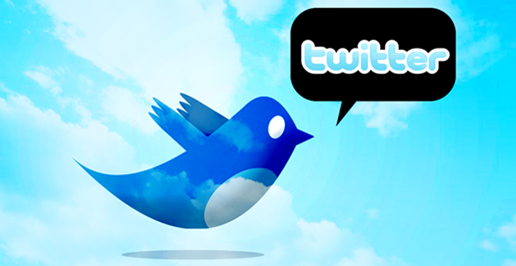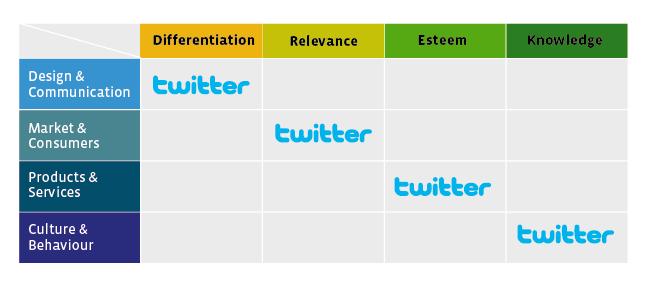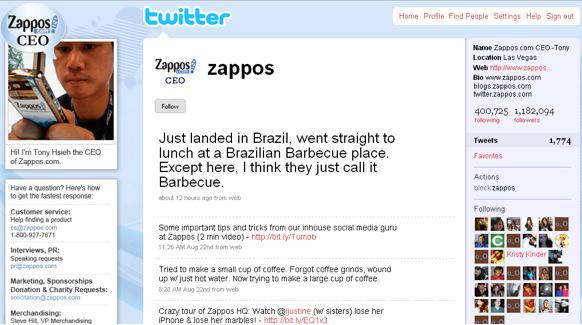

In 2009, Jack Dorsey, co-founder and chairman of Twitter, Inc., humorously defined Twitter as “a short burst of inconsequential information” and “chirps from birds,” embodying the essence of the micro-blogging social network. However, Twitter quickly transcended its lighthearted origins, making waves in global conversations and dominating headlines. This surge in popularity didn’t go unnoticed by companies navigating the challenges of an economic downturn. Faced with reduced consumer spending, businesses turned to Twitter as a strategic tool to not only weather the economic storm but also to enhance their brand equity. Leveraging the platform, companies sought to promote their products, connect with both existing and potential customers, and solidify their brand presence in the ever-evolving landscape.
So how do companies use Twitter to build their brands? To answer that, let us first learn some facts about Twitter.

Twitter, established in 2006, has swiftly risen to prominence as a leading social networking and micro-blogging service, allowing users to share and consume concise messages known as “tweets.” These text-based posts, limited to 140 characters, populate the author’s profile page and reach their subscribers, or “followers.” Despite being just three years old, Twitter stands as the third most popular social networking site globally, trailing only behind Facebook and Myspace.
Setting itself apart from other social networks, Twitter offers a unique dynamic where users can seamlessly follow others without the need for approval. This simplicity extends to interactions with celebrities, politicians, companies, or individuals. Users can easily send private Direct Messages (DM) to followers or engage in public conversations across the Twitter-verse. With a text-centric approach, Twitter maintains a clean interface, and users share multimedia content through URL links. Notably, despite its lack of advertising on the platform, Twitter remains a free service, enabling businesses to promote themselves and engage with millions of potential customers without any associated costs. This distinctive feature positions Twitter as a powerful tool for businesses seeking to enhance their brand equity.
As mentioned in our previous article “What is Branding?”, Labbrand believes that brand equity includes brand strength and brand stature. While brand strength is determined by brand differentiation and brand relevance, brand stature is determined by brand esteem and brand knowledge. Twitter can help a brand build up these four pillars of brand equity through different dimensions of interaction between a brand and its stakeholders. We will address four examples to illustrate the point. While the brands cited in the rest of this article may satisfy all four criteria, we will only use one brand example to highlight each measure.

Businesses strive to make their brands unique. Differentiation is strongly associated with a brand’s communication and design. Given the proximity that Twitter provides, twittering is undoubtedly a highly unique way for companies to communicate with customers. However, this advantage may not last for long due to Twitter’s fast growth, because when the majority of brands have their own Twitter pages the fact that a brand has a Twitter page will no longer be unique. At least for the time being, however, Twitter can contribute to brand differentiation.

JetBlue Airways, an American low-cost airline, has differentiated its brand through Twitter communication. Since problems with flights can cause a lot of headaches, JetBlue has set up a service where customers can complain about flight problems directly to airline staff via Twitter. It is no wonder JetBlue has already attracted more than 1.1 million followers since the launch of its Twitter page in the spring of 2007. Today its account is often cited as an example of smart corporate twittering. Using Twitter to create an efficient customer service communication platform will contribute to JetBlue’s differentiation and overall brand equity.
Brand relevance is a measure of appropriateness and relates to a brand’s appeal. Relevance both drives and reflects consumer choice. Relevance basically answers the question of why consumers choose to buy a particular product. It can be called the cornerstone of a brand. For companies new and old, including small businesses, how to make their brand relevant is often difficult in a highly competitive market with diverse and demanding consumer groups. Yet, Twitter can give a brand the chance to build relevance and even loyalty among today’s consumers.
Teusner Wines, a boutique winery in Australia’s Barossa Valley, has only three employees, but its Twitter account (@Teusnerwine) has nearly 6,000 followers. Dave Brookes, Teusner Wines’ one-man sales and marketing department, believes that using Twitter is more about building relationships with existing and potential customers than selling products. Brookes sends friendly messages to those who are talking about Teusner Wines on Twitter. After keeping casual, relaxed exchanges with followers and avoiding product promotions, Brooke saw more people coming to the winery for tours and an increase in traffic to its website. Even though shipping restrictions prevent Teusner Wines from selling directly to individuals outside Australia, a number of people from United States and Canada have asked where they can find Teusner Wines at stores and restaurants near them, demonstrating that these potential consumers find the brand highly relevant. Moreover, Twitter users might like a brand and consider it relevant simply because it uses Twitter.
Differentiation and relevance are still not enough to build a successful brand. Eventually, customers need to decide whether or not they will purchase the product or service, and how much they like the brand. Since Twitter as well as other social media are strongly interactive, they are always linked to the esteem dimension of a brand.

American Apparel (@americanapparel) has more than 40,000 Twitter followers. One of the United States’s largest clothing manufacturer’s unique ad campaigns was inspired by one of its own Twitter followers. American Apparel received a DM from a freelance photographer (Ryan Marshal @ThePanicRoom) chronicling his wife’s pregnancy with week-by-week photos of the mother-to-be in American Apparel clothing. The company liked the photo series so much that they used the images as the basis for an ad campaign showing cute and comfy looks for expectant moms. American Apparel also set up its ad on Marchal’s blog (pacingthepanicroom.com). They ran a unique banner ad for baby clothes, and the blog became one of American Apparel’s top performing sites for online ads.
As you can see, Twitter helped drive American Apparel’s product promotion decisions, and at the same time demonstrated the brand’s proximity to their customers, thereby building esteem.
Thus far we have discussed external brand interactions; however, Twitter can also enhance interactions between employees and the companies that they work for. This means Twitter also has internal effects on a business and their internal brands.
Just like a twittering company would appeal to its twittering customers, it will also appeal to its twittering employees. It works the other way around too; some companies test applicants’ ability to use twitter when recruiting new employees, since Twitter is considered to be a vital tool by many marketers.
As for knowledge, it measures whether there is a true understanding of what a brand stands for. No one knows better about what a brand stands for than its own top executives who get to decide what their brands mean. Normally, only a few privileged employees could directly interact with their top executives, but Twitter can help to change this. For instance, Zappos.com’s CEO Tony Hsieh is in charge of the electronic commerce company’s Twitter account (@zappos), which has nearly 1.2 million followers. Not only can customers contact Hsieh via Twitter, so can Zappos.com’s employees. Hsieh constantly writes his thoughts on business and Zappo as a brand like “Good businesses figure out how to continuously add value. Great businesses figure out how to continuously multiply value,” and “When your work is an extension of who you really are deep down inside, it’s no longer a job or a career. It’s a calling,” so that employees can better understand the brand and better serve customers. By building esteem and knowledge internally, Zappos will build a stronger and more valuable brand overall. (In July 2009, Amazon.com Inc. announced it will purchase Zappos.com, and the deal is expected to go through in the fall. It will be interesting to see if this acquisition will affect Zappos Twitter account!)

From the above exploration of Twitter, we can see that Twitter does have the potential to help businesses build brand equity. However, we are sure that the most effective way has not yet been discovered. The new-born Twitter leaves businesses a huge space to explore, innovate, and experiment with the most effective ways to twitter up brand equities.
http://latimesblogs.latimes.com/technology/2009/02/twitter-creator.html
A Labbrand Group Company © 2005-2025 Labbrand All rights reserved
沪ICP备17001253号-3To improve your experience, we use cookies to provide social media features, offer you content that targets your particular interests, and analyse the performance of our advertising campaigns. By clicking on “Accept” you consent to all cookies. You also have the option to click “Reject” to limit the use of certain types of cookies. Please be aware that rejecting cookies may affect your website browsing experience and limit the use of some personalised features.